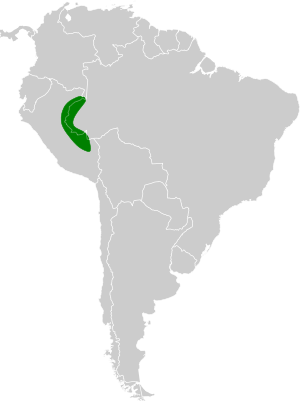Elusive antpitta facts for kids
Quick facts for kids Elusive antpitta |
|
|---|---|
| Conservation status | |
| Scientific classification | |
| Genus: |
Grallaria
|
| Species: |
eludens
|
 |
|
The elusive antpitta (Grallaria eludens) is a small, shy bird that lives in the forests of Brazil and Peru. It belongs to a group of birds called Grallariidae, which are known for being hard to spot. This bird gets its name "elusive" because it's very good at hiding in its dense forest home.
Contents
Meet the Elusive Antpitta
Antpittas are usually plump, short-tailed birds with long legs. They often live on the forest floor, walking around and looking for food. The elusive antpitta was first described by scientists Lowery and O'Neill in 1969. Not much is known about this particular species because it's so difficult to find and study in the wild.
Where Does It Live?
This special bird makes its home in the subtropical or tropical moist lowland forest. This means it lives in warm, wet forests that are not very high up, usually near the ground. These forests are full of tall trees, thick plants, and lots of moisture, which is perfect for a bird that likes to stay hidden. You can find the elusive antpitta in parts of the Amazon rainforest in both Brazil and Peru.
Why Is It Elusive?
The elusive antpitta is known for being very shy. It spends most of its time on the forest floor, often hidden by thick plants and fallen leaves. It moves quietly and can be hard to see even when it's close by. Scientists often rely on hearing its unique calls to know it's around, rather than seeing it. This secretive nature helps it stay safe from predators.
Protecting This Bird
Sadly, the elusive antpitta is facing a big challenge: habitat loss. This means that the forests where it lives are being cut down or changed by human activities. When its home disappears, the bird has fewer places to live, find food, and raise its young. Even though it's listed as "Least Concern" by the IUCN, protecting its forest habitat is still very important to make sure this unique bird can survive for many years to come.
See also
 In Spanish: Tororoí del Ucayali para niños
In Spanish: Tororoí del Ucayali para niños


